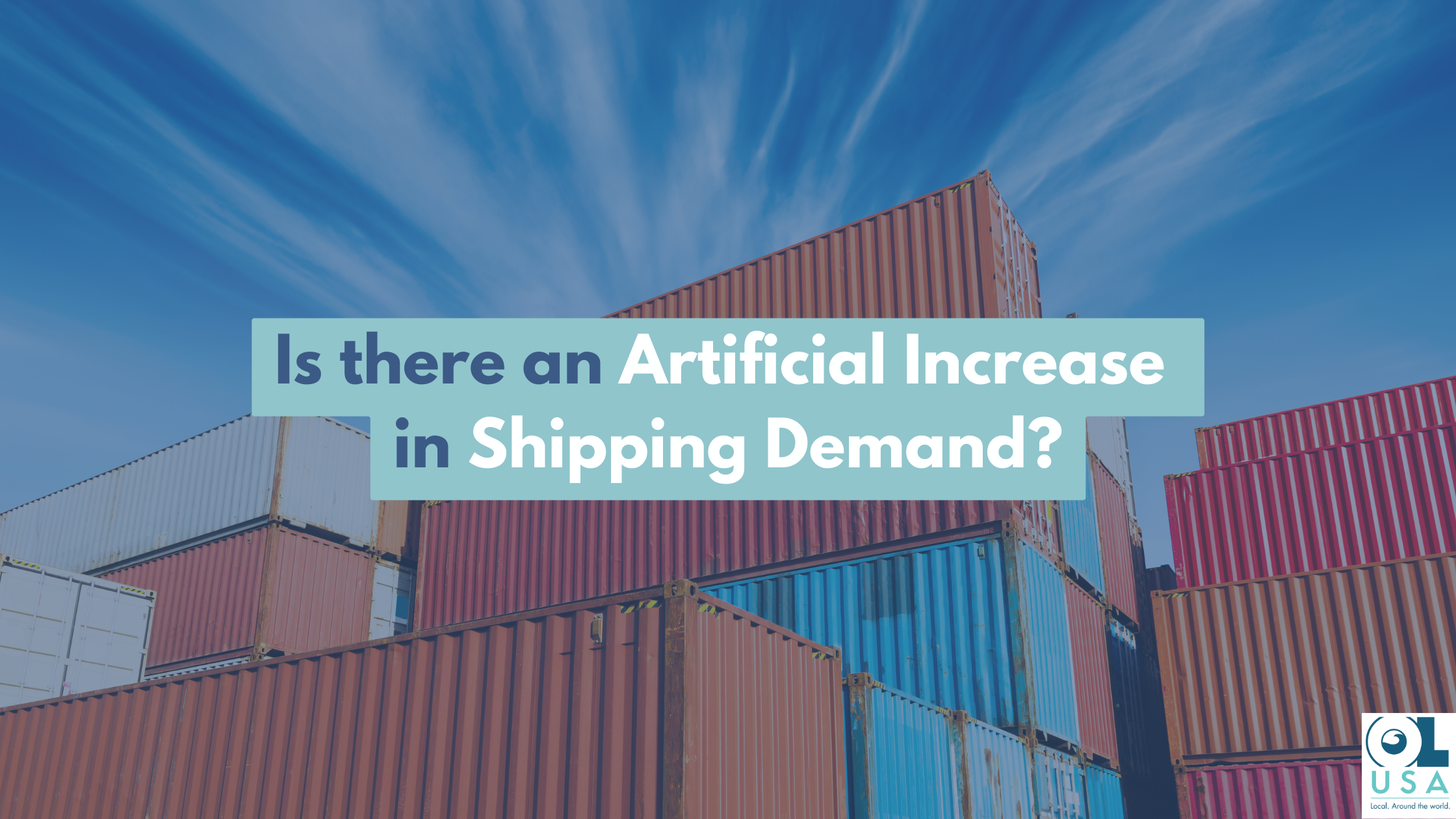It’s a delicate balance. Given the pandemic-powered disruptions facing the global supply chain—slowdowns, lockdowns, and manufacturing shortages, for starters—shipping and logistics companies were forced to reimagine the way they do business. And during that period, many organizations were pushed to, in some cases, sail empty and half-empty ships or create false demand with scarcity tactics in order to move merchandise and drive up demand.
While the global supply chain has heavily recovered since COVID-19 this practice “artificial demand” continues to be a relatively common strategy. The impact and potential consequences, though, need to be reconsidered and re-evaluated in light of the current market conditions—most recently inflation, the war in Ukraine, and increasing gas prices, all driving the cost of goods.
Understanding Artificial Demand
Typically carriers aim to send fewer ships, each at or approaching maximum capacity and in doing so are able to cancel or hault additional shipments in what is referred to in the industry as “blank sailing”. With this strategy, processes are more efficient, inventory is predictable, and prices stay consistent. During peak COVID-19, though, inventory shortages, overstocking, and sharp declines in demand pushed carriers to optimize spending and rapidly adjust supply.
As a result, artificial demand became more and more the norm. Carriers deliberately reduced tonnage, sending ships at a less-than-optimal capacity. Sending lower-than-anticipated inventory, in many cases, drove up demand by heavily leveraging scarcity tactics and boosted the costs of those shortage goods and products. While this practice of artificial demand may seem like an attractive solution for a retailer or organization seeking to unload inventory or maintain a healthy pipeline, it’s important to remember the laws of cause and effect. Case in point, on the other end of the artificial demand spectrum there’s also the Bullwhip Effect. When retail levels increase slightly, brands and manufacturers often see that jump as a sign of what’s to come—that the current 10% increase in demand, for example, could actually signal an eventual 20% spike. To prepare, organizations often respond by increasing inventory for anticipated high-demand goods and products.
Often, though, the Bullwhip Effect leads to aggressive forecast updates, order batching, rationing, and price fluctuations. This, then, drives more customer demand distortion—no longer are organizations responding to a potential trend but, instead, reacting to less-than-reliable projections emerging from the disorganization. At that point, though, the impact is already felt through the supply chain.
The Unintended Consequences of Artificial Demand
Granted, artificial demand and the Bullwhip Effect aren’t new to the shipping and logistics industry—and it certainly wasn’t a COVID-19 phenomenon. Carriers have always had the ability and motivation to adjust supply in response to market conditions—or, in some cases, simply to maximize short-term profits: reduced supplies means higher costs for products and materials and increased prices at retail. At the same time, artificial demand can have a ripple effect across the supply chain that many don’t consider and when you add inflation and global politics into the mix, predicting supply and demand behaviors to maintain profitability at your organization becomes exceedingly complex. Without predictable inventory quantities—or a sense of what’s truly needed in the marketplace—it’s virtually impossible for businesses to accurately predict the cost of their goods and services. Manufacturers waiting on parts, for example, can’t properly quote final pricing to customers who, then, can’t price at the retail level.
And when products do hit retail shelves? With this sense of scarcity, consumer confidence often declines as sale and resale values skyrocket. This can lead to decreased investment and a decrease in overall economic activity.
Strategies for Optimizing the Supply Chain in the Face of Artificial Demand
So, how can companies mitigate risk and more reliably predict supply and demand trends? With artificial demand an ongoing reality, many businesses are focused on optimizing their own supply chains—specifically, improving efficiencies and reducing costs through next-level inventory management systems, streamlined processes, and improved communications with suppliers and carriers. Others are opting for alternative supply chain models, such as just-in-time (JIT) or consignment inventory, reducing their dependence on the shipping market and helping better manage costs over time. In addition, many leading retailers are hiring external consultants to gather intel on everything from warehouse data trends to holiday month comparisons to inflation metrics and look for correlations or patterns among various data points in the hope it will reveal a market opportunity.
Alternatively or in conjunction with these strategies, many global-leading organizations are tapping OL-USA to help mitigate the risk surrounding artificial demand. A trusted partner like OL-USA can help businesses navigate the market and find the most cost-effective solutions for their supply chain needs. This can include identifying alternative shipping routes, negotiating better pricing, and leveraging technology to optimize supply chain operations
While we’ve emerged from peak pandemic challenges, the shipping and logistics industry will continue to face challenges and shifts in market conditions, including artificial demand. However, by working with a trusted partner and taking steps to optimize their supply chain, businesses can weather these challenges and remain competitive in the fast-evolving global market.



